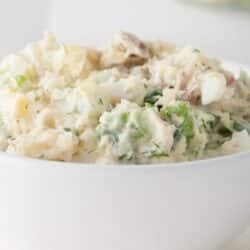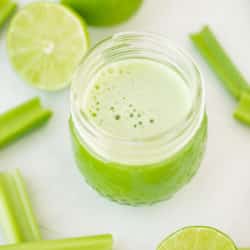9 Worst Foods for Arthritis (Eat These Instead)
It can be tempting to reach for comfort foods when your arthritis is acting up, but it turns out that your food choices can impact the discomfort levels of arthritis. In this article, I’ll share the worst foods for arthritis pain, plus what you should eat instead.
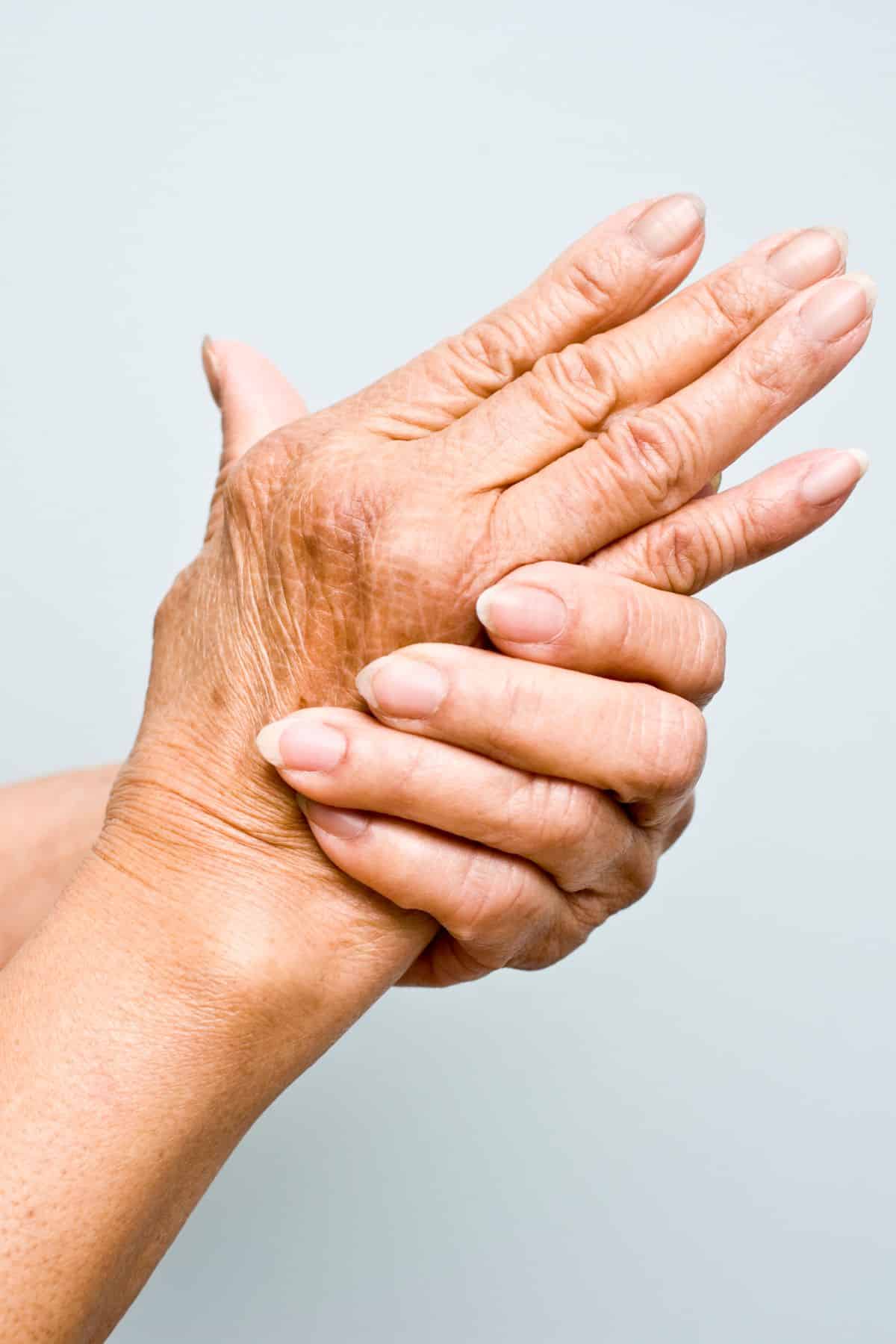
Arthritis Overview
Arthritis is a broad term referring to a group of more than 100 chronic joint disorders characterized by inflammation, pain, and stiffness in the affected joints.
The two most common types are osteoarthritis, which results from wear and tear on the joints over time, and rheumatoid arthritis, an autoimmune disease where the body’s immune system attacks the joints.
Other additional different types of arthritis include gout, psoriatic arthritis, and juvenile idiopathic arthritis, each with distinct causes and symptoms.
Worst Foods for Arthritis
For a variety of reasons, here are the worst foods for arthritis pain, including rheumatoid arthritis, joint pain, and other arthritis symptoms.
Be sure to read onto the end where I share a list of the healthy foods that you should consume, including specific ones that may even help reduce inflammation and arthritic pain. A healthy diet may help reduce your symptoms.
1. Processed Foods
There are multiple studies that show that consuming processed foods can trigger inflammation, worsening your arthritis symptoms.
Processed foods include things like baked goods, many breakfast cereals, fast foods, prepared desserts, and microwave meals. These tend to contain undesirable ingredients like refined carbohydrates, added sugar, and trans fats. Processed foods are often high in salt too.
Refined carbohydrates are empty calories and have been stripped of all their fiber, bran, and nutrients. These include cookies, cakes, candy bars, and these types of dessert foods. Studies have linked diets high in refined carbs with increased inflammation in people with arthritis.
Refined carbs can also increase insulin resistance and are a contributing factor to obesity, both of which are connected to arthritis.
Trans fats – also known as partially hydrogenated oils – are often added to processed foods in order to preserve them. But these present issues too, with researchers finding that they may trigger systemic inflammation.
Other research has demonstrated how salt can be problematic for arthritis sufferers.
Studies in mice showed that a high-salt diet could aggravate symptoms, with a separate study confirming that a low-salt diet resulted in less inflammation and less bone destruction.
2. Added Sugars
There are many adverse health issues connected to consuming added sugars. A worsening of the symptoms of arthritis is among them.
Refined sugar is known to cause inflammation and a study involving more than 200 people found that desserts and sodas sweetened with sugar were the foods most often found to increase arthritis pain.
Many foods high in refined sugars – like chocolate, candy, ice cream, and soda (soft drinks) – are obvious.
But you should also check the labels of foods like sauces, too, as their sugar content can be surprisingly high. Don’t forget that sugar goes by many other names and may appear as sucrose, fructose, maltose, or corn syrup on ingredient lists.

3. Vegetable Oils
According to science, humans evolved on a diet with a 1:1 ratio of omega-6 to omega-3 essential fatty acids (EFA).
With the Western diet, that ratio has gone awry and we tend to consume too many omega-6 fats and not enough omega-3. Among other things, this can increase inflammation, worsening the symptoms of osteoarthritis and rheumatoid arthritis.
In order to correct the imbalance, it’s good to work on ways of increasing your consumption of omega-3-rich foods and reducing foods that are high in omega-6 fats.
Sources of omega-6 fatty acids include vegetable, sunflower, corn, soybean, and safflower oils. Omega-3-rich alternatives to try include olive oil, palm oil, and lard.
4. Allergenic Foods (For You)
If you are allergic to a food – whether it’s gluten, wheat, dairy, or something else – you may notice that your joint pain feels worse after consuming it. That’s because allergens trigger the immune system, thereby prompting inflammation throughout the body.
This makes it particularly important to avoid foods to which you are sensitive if you also suffer from arthritis.
And, just to be clear, you don’t have to have a food allergy to avoid a certain food like gluten or dairy. If you experience an inflammatory response after eating certain foods, then you may have a food sensitivity which would warrant you cutting out that food.
Rheumatoid arthritis is a type of arthritis that is an autoimmune disease. In this case, you may need to try a gluten-free diet (or an AIP diet) that can help reduce your autoimmune markers. But, everyone is different. Consult a functional medicine doctor for more specialized support.
You may try an elimination diet like a paleo diet or Whole30 which can help you rule out which food groups may be affecting your arthritis symptoms and overall health.
5. Fried Foods
The reason for avoiding fried foods is twofold. First, many contain trans fats, which – as we discussed earlier – can trigger inflammation.
But the other problem is something called AGEs – advanced glycation end products. These are molecules that form when certain foods – particularly high-fat animal foods – are fried, seared, or roasted.
Some of the richest sources of AGEs are:
- French fries
- Pan-fried steak
- Fried/roasted chicken
- Bacon
High levels of AGEs in your body can lead to inflammation and oxidative stress, which have been shown to worsen arthritis symptoms.
To keep your AGE levels under control, substitute fried foods with clean, whole ingredients, particularly legumes, vegetables, and fish. Instead of cooking with very high heat, prepare these foods by steaming, poaching, stewing, or boiling them.
Or, if you want that crispy texture to your foods, consider air frying! One of the pros of air frying is that you can get a great texture without deep frying.
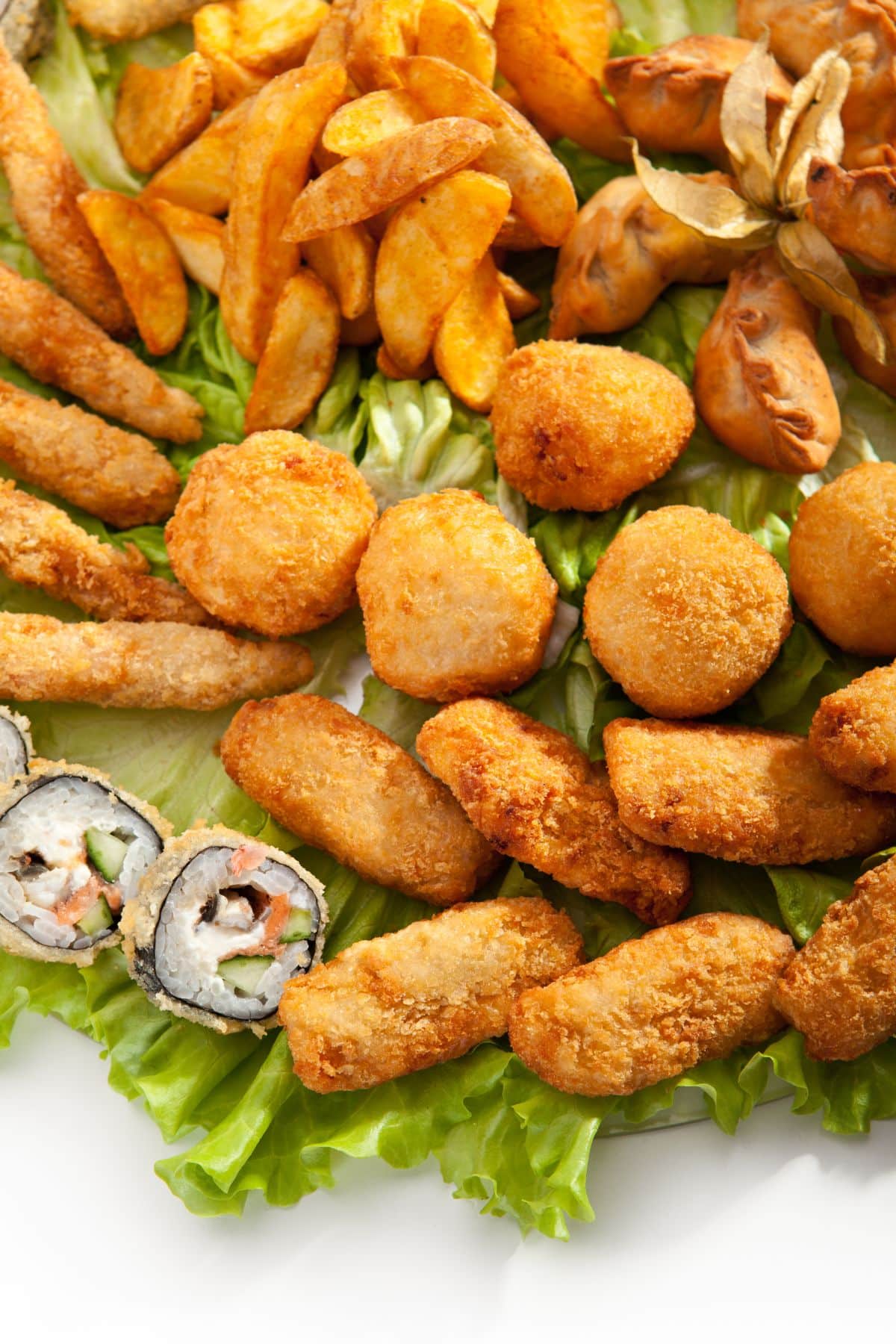
6. Excess Alcohol
Consuming a moderate amount of alcohol is considered safe for arthritis sufferers. In fact, moderate drinking has even been found to reduce the risk of developing the condition.
But too much alcohol can be problematic, particularly if you suffer from gout – one of the most common causes of inflammatory arthritis in the US. That’s because alcohol has been shown to worsen gout attacks and cause them to happen more often.
A separate study, meanwhile, has linked alcohol consumption with increased spinal damage in people suffering from axial spondyloarthritis (arthritis of the spine and the joints connecting the spine to the pelvis).
7. Soda
As mentioned earlier, added sugars can significantly increase the symptoms of arthritis. One of the leading sources of added sugar is sugary soda, with the average 20-ounce bottle containing the equivalent of a whopping 16 teaspoons of table sugar.
Choose water, coffee, seltzer, or herbal tea instead of soda. If you find water too plain, try infusing it with fresh fruit for a flavor boost.
8. Tomatoes and Nightshades
The advice around eating tomatoes – and other nightshades like potatoes, bell peppers, and eggplants – is mixed.
Nightshades contain a toxin alkaloid called solanine.
Some research has shown that vegetables containing solanine can affect the permeability of the intestinal wall, indirectly triggering inflammation.
But a study involving animals contradicted this, finding that consuming nightshades could help reduce inflammation instead.
This, of course, presents you with a quandary!
The good news is that nightshades are a rich source of nutrients and well worth including in your diet if possible.
So the Arthritis Foundation recommends avoiding all nightshades for a couple of weeks and then slowly reintroducing them, one at a time. This will make it easy to identify any that are aggravating your symptoms.

9. High-Purine Foods
Earlier in this article, I mentioned gout – a common, but very painful, form of inflammatory arthritis.
If you suffer from gout, your healthcare provider may recommend avoiding foods that are high in purines.
Purines are chemical compounds that your body metabolizes during the digestive process. If you consume more purines than your body can process effectively, uric acid starts building up in your bloodstream, worsening your symptoms.
Purines are in lots of different foods, so it’s difficult to avoid them altogether. But you should do your best to modify your intake, which – along with medication – can help control your condition.
Foods high in purines include:
- Cured meats like ham and bacon
- Certain kinds of seafood, including scallops, mussels, sardines, and anchovies
- Offal, such as liver, kidneys, and heart
- Alcohol
Cauliflower, beans, and mushrooms are also high in purines. However, this review revealed that these vegetables do not seem to exacerbate gout symptoms.
Best Foods to Calm Arthritis Pain
A diet filled with clean, healthy ingredients – particularly one rich in plant-based foods and low in processed animal products – has been demonstrated to reduce the pain of arthritis.
This is in part because it helps prevent inflammation, but also because a diet like this results in a lower BMI (body mass index). Excessive body weight is known to make the symptoms of arthritis worse.
Aim to include the following foods in your diet on a regular basis. Whole foods and anti-inflammatory foods can also have other health benefits including helping with chronic conditions, disease control, blood pressure, and mental health. And, of course, a well-balanced diet may help reduce joint inflammation.
Get my free clean eating healthy shopping list.
1. Fatty Fish
To balance out your omega-6 to omega-3 essential fatty acids ratio you need to increase your consumption of omega-3s. And to do that, you need to eat more fatty fish.
Omega-3 fatty acids are well-documented to help control arthritis symptoms and are abundant in oily fish like sardines, salmon, tuna, mackerel, and herrings.
If you’re not a fan of fatty fish or if you are following a vegan diet, some great alternatives include flax seeds, walnuts, or their oils.
Try these recipes for Salmon Salad, Instant Pot Salmon and Potatoes, or Air Fryer Salmon.
2. Turmeric
Turmeric – that rich, yellow spice used in Indian curries – contains a substance called curcumin.
After receiving 500 mg of curcumin three times a day during research, 139 people with symptoms of knee osteoarthritis found their pain was significantly relieved. As much, in fact, as the control group that was given the NSAID (non-steroidal anti-inflammatory drug) diclofenac.
A real benefit of focusing on curcumin over an NSAID like diclofenac is that it is better tolerated by patients and has few side effects.
To make the most of the turmeric you consume, eat it with foods that contain black pepper and/or fats. These are believed to boost absorption.
Ideas include:
- Adding turmeric to scrambled eggs or tofu
- Trying a Turmeric Shot
- Stirring it into soup
- Blending it into a smoothie
- Making turmeric tea

3. Ginger
There has been a fair bit of research into the benefits of ginger for preventing arthritis pain.
One study has found its effects comparable to ibuprofen for a limited time, another found concentrated ginger extract useful for treating people with osteoarthritis of the knee, and researchers in 2016 found that ginger and echinacea supplements reduced pain and inflammation after knee surgery.
So how can you get more ginger into your diet?
Here are some ideas:
- Add a little chopped ginger root to freshly brewed tea
- Making a Ginger Wellness Shot
- Grate ginger root into salads and sauces
- Sprinkle dried powdered ginger into soups and stews
- Enjoy a little candied ginger as a dessert
- Adding ginger juice to recipes (see my review of the Best Juicers for Ginger)
4. Nuts and Seeds
Nuts and seeds feature strongly in the Mediterranean diet – a diet packed with antioxidants that can decrease the pain of rheumatoid arthritis.
Some – particularly walnuts, chia seeds, and flaxseeds – are also good sources of alpha-linolenic acid (ALA), an essential omega-3 fatty acid.
Just remember that nuts and seeds are high in calories, so eat them in moderation. An ounce of nuts or a couple of tablespoons of seeds is enough to give you the benefits you need.
And opt for unsalted or lightly salted versions wherever possible, as sodium is an ingredient you ideally need to avoid.
5. Berries
Berries are one of the best fruits for combating the symptoms of arthritis. All fruits are rich in antioxidants but berries contain anthocyanins too. These are helpful in reducing inflammation.
You can enjoy all kinds of berries to reap these benefits, although blueberries are particularly impressive as they contain 20 types of anthocyanin. This is compared to the 3 or 4 in other berries.
Another great thing is that you can eat them fresh, dried, or frozen, as there is no difference in their anthocyanin content.
Some easy recipes using berries include: Oat Milk Strawberry Smoothie, Strawberry Chia Pudding, or this Strawberry Protein Smoothie.

6. Olive Oil
Olive oil is another key ingredient in the Mediterranean diet, the benefits of which I’ve already discussed.
But olive oil is also a great source of oleocanthal. This is a natural compound found to decrease arthritis markers and contains anti-inflammatory characteristics similar to Ibuprofen.
In fact, it’s the high levels of oleocanthal that give it that mildly peppery taste!
Plus, of course, olive oil is loaded with beneficial omega-3 fatty acids. It has also been shown to help prevent cartilage damage caused by osteoarthritis.
As useful as it is in mitigating arthritis pain, olive oil is very high in calories (around 120 per tablespoon). So be sure to use it in moderation!
Ideas include:
- Using it for healthy, homemade salad dressings like my Honey Mustard Dressing,
- Using it as a substitute for butter,
- Creating a delicious dipping oil for crusty bread.
7. Garlic and Onions
Garlic and onions both contain a useful anti-inflammatory compound for reducing arthritis symptoms – and that’s quercetin.
They also contain a compound called diallyl disulfide (DADS), which experts found has anti-inflammatory properties and can prevent the destruction of cartilage.
But not all onions are created equal!
Red and yellow/brown onions are believed to be the most nutritious varieties, and better than white onions for delivering the benefits you need!
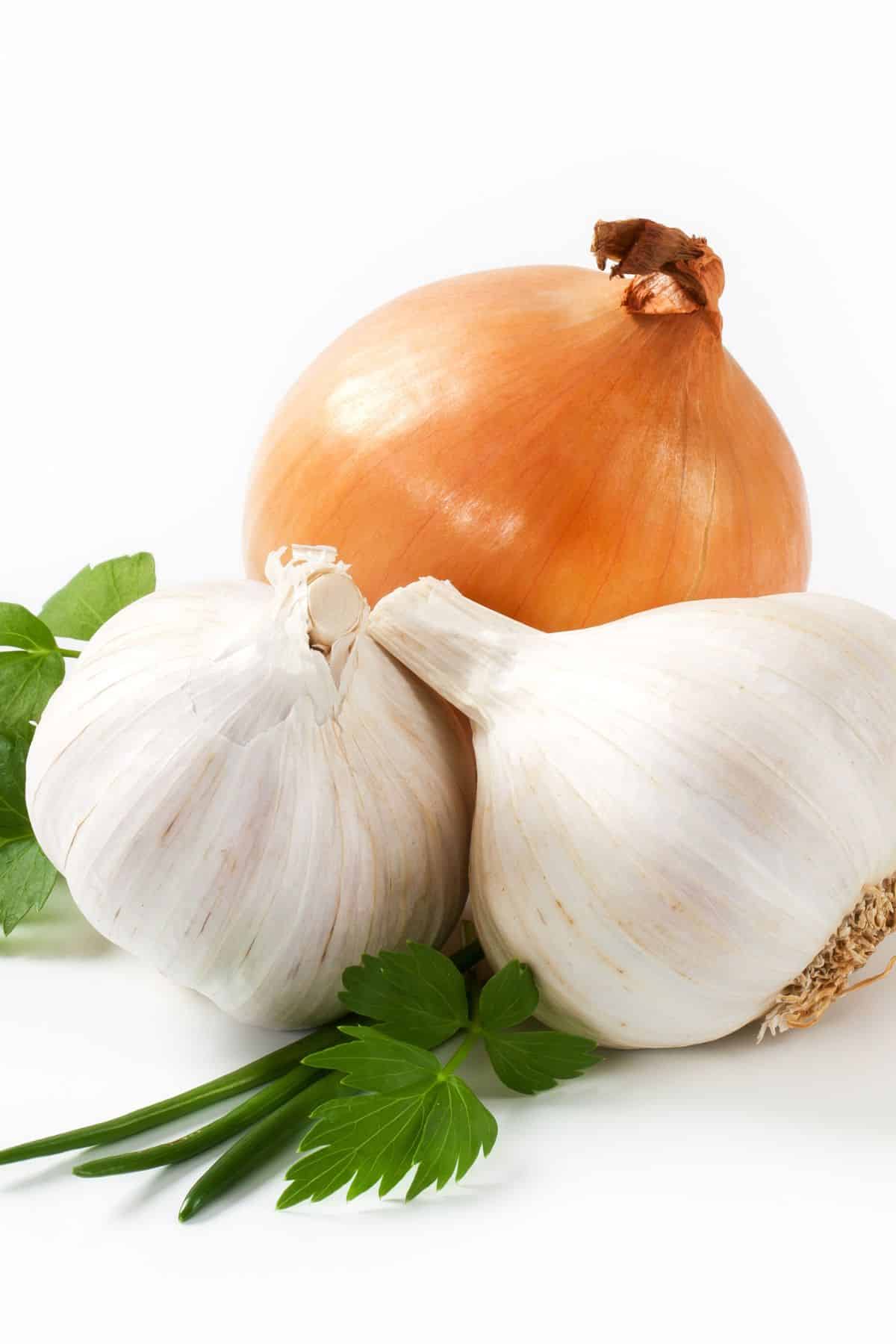
Arthritis Diet FAQs
Not usually when consumed in moderation.
In fact, research has shown that coffee has antioxidant properties, protecting you from cell damage. It may also help protect against gout. Aim for a coffee or two per day but avoid sweetening them with sugars or flavored syrups, which can be triggers for inflammation.
When trying to eliminate sugar from your diet it’s natural to turn to sweeteners like aspartame to satisfy your craving.
But whether or not sweeteners are safe for arthritis sufferers is a matter of debate and you’ll find much conflicting evidence.
Many people with arthritis feel that they are sensitive to sweeteners and that they trigger inflammation. But experts acknowledge this can be down to a variety of factors, from genetics to dosage.For that reason, it’s not easy to give a “one size fits all“ answer to this question and it is one you may wish to discuss with your healthcare provider.
See my related article on the best natural sweeteners.
More Clean Eating Resources You Might Like!
Conclusions
The impact of your diet on the symptoms of arthritis can be significant. And that’s good news because it gives you some control over your condition and the tools to limit your pain. Eating a real food diet and maintaining a moderate body weight will together reduce inflammation, relieve pressure on your joints, and go a long way to improving your quality of life.
Don’t forget to join my newsletter list to get exclusive clean eating recipes and tips. The newsletter is 100% free with no spam; unsubscribe anytime.
About the Author: Carrie Forrest has a master’s degree in public health with a specialty in nutrition. She is a top wellness and food blogger with over 5 million annual visitors to her site. Carrie has an incredible story of recovery from chronic illness and is passionate about helping other women transform their health. Send Carrie a message through her contact form.
Note: this post is for informational purposes only and is not intended as medical advice. Please consult your healthcare provider for recommendations related to your individual situation.













